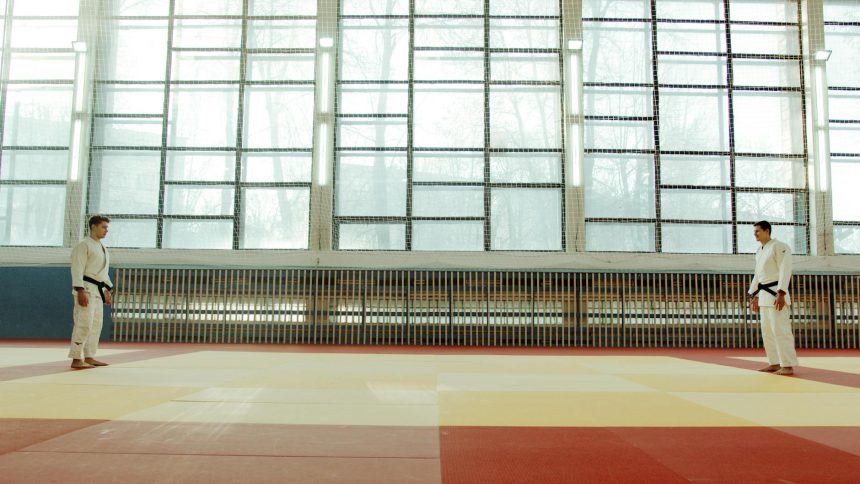URL Slug: japan-s-military
Featured image provided by Pexels — photo by Artem Podrez
For over seventy years, Japan has navigated a unique path in global security, balancing robust economic power with a constitutionally constrained defense posture. This delicate equilibrium, largely shaped by its post-World War II constitution, has profoundly influenced the development and capabilities of Japan’s military. Once limited to a strictly self-defensive role with “meager” defense spending, the nation now stands at a pivotal juncture, re-evaluating its security identity amidst a complex geopolitical landscape. How has Japan’s defense evolved, and what does its future hold?
Following its defeat in World War II, Japan adopted a pacifist constitution, largely influenced by the United States. Central to this was Article 9, which famously renounces war and the maintenance of “land, sea, and air forces, as well as other war potential.” This foundational principle profoundly shaped the trajectory of Japan’s military for decades.
Despite these constitutional limitations, the Korean War’s outbreak in the early 1950s prompted the establishment of the National Police Reserve, which soon evolved into the Japan Self-Defense Forces (SDF). The SDF was explicitly designed for self-defense, operating under strict interpretations of Article 9.
For decades, this constitutional framework significantly constrained the growth and operational scope of Japan’s military. Consequently, defense spending remained notably low, often capped at a symbolic one percent of its Gross Domestic Product (GDP).
Historically, Japan’s defense budget was indeed modest, reflecting its pacifist constitution and focus on economic recovery. However, the early 21st century has seen a significant shift. Driven by escalating regional tensions and a changing global security environment, Japan has begun to steadily increase its defense spending and modernize its capabilities.
Today, the SDF is a highly advanced, well-equipped, and professional force. While still operating under constitutional constraints, it possesses cutting-edge technology and sophisticated training, making it one of the most capable militaries in Asia.
Several critical factors are accelerating the modernization and re-evaluation of Japan’s military posture. These external pressures and internal debates are reshaping the nation’s defense identity.
Article 9 of the Japanese Constitution is a unique legal provision that has profoundly shaped the nation’s defense policy. It consists of two clauses: the first renounces war as a sovereign right, and the second prohibits the maintenance of war potential. For decades, this has led to a highly restrictive interpretation, limiting the SDF to purely defensive actions within Japanese territory.
However, interpretations have evolved. In 2014, a landmark cabinet decision reinterpreted Article 9 to allow for the exercise of collective self-defense under specific, limited circumstances. This controversial move permits Japan’s military to aid allies under armed attack, even if Japan itself is not directly targeted, provided certain conditions are met. For a deeper understanding of this constitutional debate, you can explore resources from the Japanese Ministry of Foreign Affairs.
The debate over revising Article 9 is one of the most significant political discussions in modern Japan. Proponents argue that revision would align the constitution with reality, granting the SDF full military status and allowing Japan to contribute more effectively to international security. Opponents fear it could lead to Japan becoming entangled in foreign conflicts and abandoning its pacifist identity.
Public opinion remains divided, reflecting the deep historical context and the desire to balance national security with the cherished pacifist ideals enshrined in the constitution.
Despite its constitutional limitations, Japan’s military plays an increasingly vital role in regional security. The SDF actively participates in joint exercises with allies, particularly the United States, to enhance interoperability and deterrence.
Furthermore, Japan contributes to global peace and stability through international peacekeeping operations, humanitarian assistance, and disaster relief missions. Its strategic focus remains on maintaining a free and open Indo-Pacific, collaborating with like-minded nations to uphold the rules-based international order. Insights into these partnerships can be found through organizations like the Council on Foreign Relations, which often covers US-Japan relations and regional security dynamics.
Looking ahead, the trajectory of Japan’s military points towards continued modernization and an increasingly proactive role in regional and global security. Defense spending is projected to rise further, with ambitious goals to acquire advanced capabilities in cyber warfare, space, and unmanned systems.
The ongoing debate surrounding constitutional revision, coupled with persistent external threats, suggests that Japan is poised to evolve beyond its traditional post-war defense identity. While a full-fledged “normal” military power might still be years away, Japan’s commitment to its own defense and its contributions to international stability are undeniably growing.
From the constitutional constraints of the post-war era to its current position as a sophisticated defense force, Japan’s military has undergone a remarkable transformation. Driven by geopolitical realities and internal debates, the nation is carefully recalibrating its defense posture, increasing capabilities, and re-interpreting its pacifist constitution. This evolution is not merely about military hardware; it reflects Japan’s deepening understanding of its role in a complex, interconnected world.
What are your thoughts on Japan’s evolving defense posture? Share your perspective in the comments below!

Sign in to your account